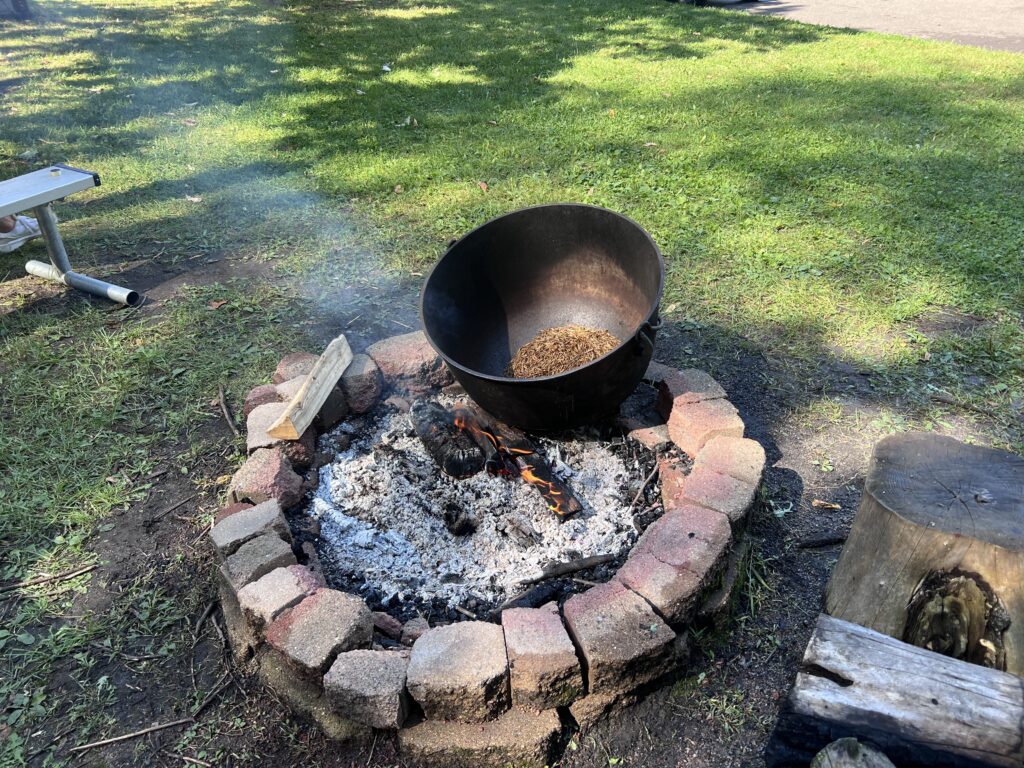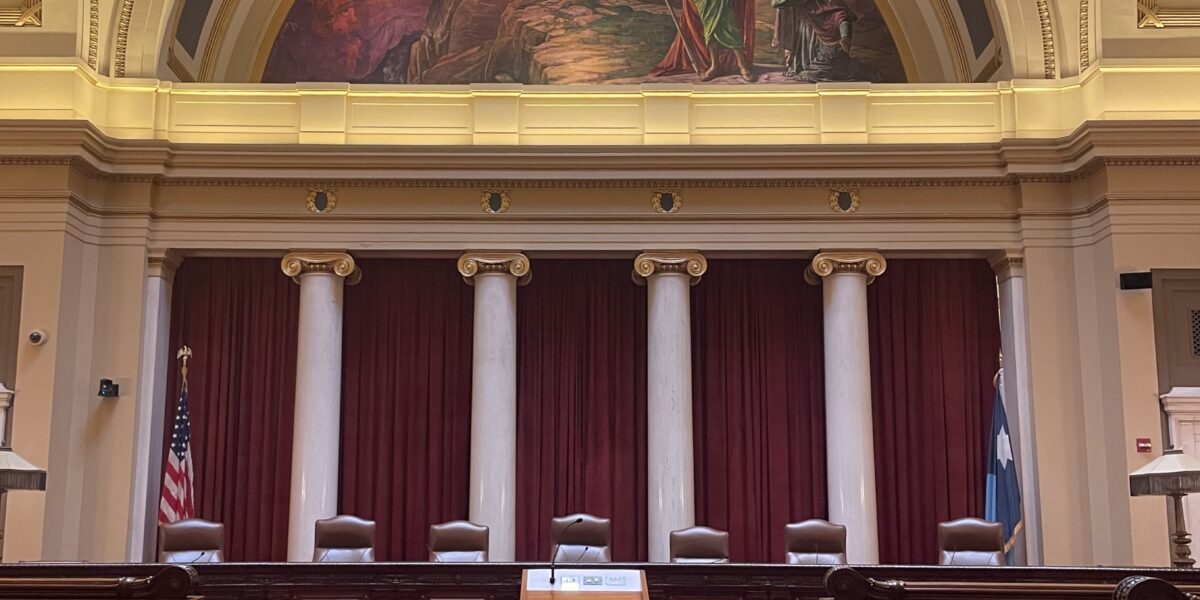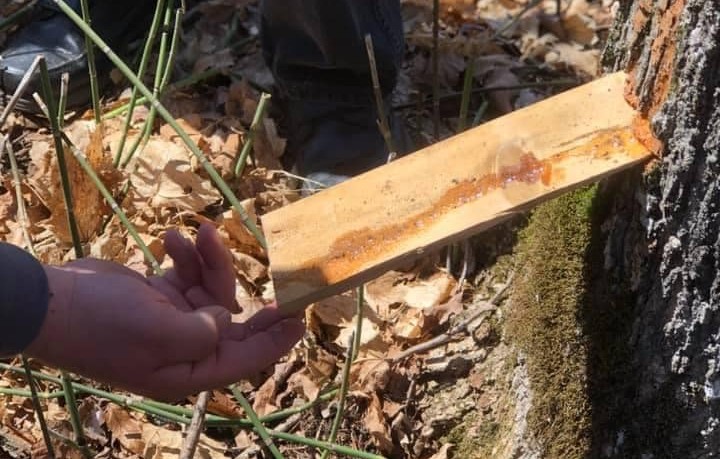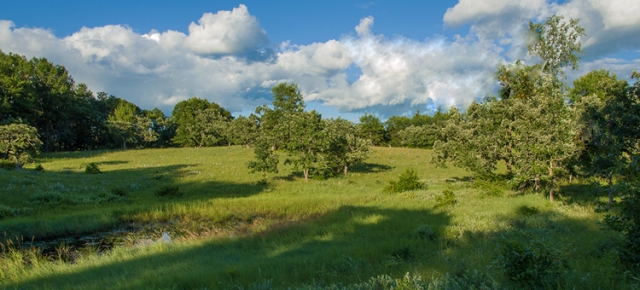
Manoomin, also known as wild rice, holds immense cultural significance for Native Americans in Minnesota and the surrounding region. Chandra Colvin takes us to a festival that teaches people about the history and the different ways manoomin is harvested and prepared.
Marie Rock: This is Minnesota Native News, I’m Marie Rock. Every fall the city of Roseville holds a Wild Rice Festival. As Chandra Colvin explains, the goal of the festival is to teach people the importance of wild rice and the deep history and connections it has within Minnesota’s Indigenous communities.
Chandra Colvin: Paul Rice and his cousin use a long wooden mixing paddle to stir the freshly gathered wild rice in an iron kettle over an open flame. A crowd gathers as they explain the process of harvesting manoomin, the Ojibwe word for wild rice. This step of the process is known as parching.
Paul Rice: We cook it for about an hour, a little less an hour, we don’t do big batches. Then we let it cool a little bit, and then we lay it on a tarp, and we dance on the rice, trying to get the shell to break off from the rice.
Chandra Colvin: Every year, Roseville’s Harriet Alexander Nature Center holds a festival to teach Minnesotans about wild rice – more specifically, its connection to Indigenous people, and our state’s history.
Paul Rice: It’s traditional, it’s a way of life for us. I can’t imagine being without wild rice. You know, it’s important to us. Reminds me of the family, you know, all my cousins and uncles and everybody else who has been involved in this process.
Chandra Colvin: Paul is a band member of the White Earth Nation. For 5 years he has been providing demonstrations to show how manoomin is prepared for eating, but not with modern machinery. They prepare the rice traditionally by hand from start to finish. He says they’ve been doing this since he was a young boy.
Paul Rice: We’ve been doing it for 40-50 years, you know, just in my lifetime, and maybe 100 years before that.
Chandra Colvin: Deon Haider is the program supervisor at the Harriet Alexander Nature Center.
Deon Haider: We have a variety of vendors that are here, primarily Indigenous crafters. We also have some dancers. We have some songs and games in Ojibwe, some card games. We’ve got some nature journaling activities going on.
Chandra Colvin: The festival even has taste testing where people can try to tell the difference between traditionally harvested wild rice and processed wild rice.
Deon Haider: The traditionally harvested rice is the winner in terms of taste. We try to talk about that and the cultural significance of that as a food, but also that it can be delicious, and that people should try to look for the traditionally harvested rice when they can.
[Women singing in Ojibwe]
Chandra Colvin: Robert Rice is Paul’s brother. He owns Powwow Grounds in Minneapolis right off of Franklin Avenue. He recently rolled out with a brand new food truck called “Fry Bread Factory.” He incorporates wild rice throughout his menu.
Robert Rice: If you see wild rice in the store, usually say cultivated, and it’s like, just black and that, to me, isn’t wild rice. That’s cultivated stuff, and that’s, to me, it’s tasteless.
Chandra Colvin: He tends to harvest his own rice for his recipes, such as his wild rice muffins, bread, or soup.
Robert Rice: It’s got a very nutty flavor, smoky – because we do ours over a wood fire. There are differences between White Earth and Leech Lake and Bois Forte. Some will be a little more muddy, some will be longer grain. There are some that you can pop. And what I mean by popping is that just like popcorn, people pop the wild rice and then put it on a salad.
Chandra Colvin: Alongside his brother Paul, they harvested rice with their family. For many Indigenous people in Minnesota, their story and relationship to wild rice is very similar. It’s a way of life.
Robert Rice: This was my 50th year harvesting rice. Before that my dad did. Before him, my grandpa did. So it’s kind of a tradition, and unfortunately, I was blessed with the name “Rice” for a last name, so I guess I’m stuck with it.
Chandra Colvin: For Minnesota Native News, I’m Chandra Colvin.
More from Minnesota Native News
- Indian Child Welfare Law Challenged at MN Supreme Court and Native Nations Impacted by Proposed SAVE Act
 TRANSCRIPT [sound element: flute music] HOST Marie Rock: This is Minnesota Native News. I’m Marie Rock. This week, the Minnesota Supreme Court heard arguments in a case that could reshape child custody laws for Native American children. At the heart of the case is a challenge to the Minnesota Indian Family Preservation Act, or MIFPA. …
TRANSCRIPT [sound element: flute music] HOST Marie Rock: This is Minnesota Native News. I’m Marie Rock. This week, the Minnesota Supreme Court heard arguments in a case that could reshape child custody laws for Native American children. At the heart of the case is a challenge to the Minnesota Indian Family Preservation Act, or MIFPA. … - The Sugarbush Tradition Continues in Minnesota’s Urban Areas, and Khayman Goodsky’s New Film
 ANCHOR Marie Rock: This is Minnesota Native News, I’m Marie Rock. This week, we hear about Minnesotans continuing the old tradition of sugarbush in urban areas. Plus, a look at a recent Indigenous film screened at Duluth’s Minnesota Film Festival. First, let’s go to Deanna StandingCloud. Deanna StandingCloud: For Indigenous woodlands people in Minnesota, the …
ANCHOR Marie Rock: This is Minnesota Native News, I’m Marie Rock. This week, we hear about Minnesotans continuing the old tradition of sugarbush in urban areas. Plus, a look at a recent Indigenous film screened at Duluth’s Minnesota Film Festival. First, let’s go to Deanna StandingCloud. Deanna StandingCloud: For Indigenous woodlands people in Minnesota, the … - Sherburne National Wildlife Refuge Faces Staffing Cuts; Headlines Affecting Indigenous Minnesotans
 ANCHOR Marie Rock: This is Minnesota Native News, I’m Marie Rock. This week, we hear about the impact of recent federal staffing cuts on Zimmerman, Minnesota’s Sherburne National Wildlife Refuge. Plus, some current events affecting Indigenous nations here in Minnesota. First, let’s hear from Deanna StandingCloud. Deanna StandingCloud: The Sherburne National Wildlife Refuge announced earlier this …
ANCHOR Marie Rock: This is Minnesota Native News, I’m Marie Rock. This week, we hear about the impact of recent federal staffing cuts on Zimmerman, Minnesota’s Sherburne National Wildlife Refuge. Plus, some current events affecting Indigenous nations here in Minnesota. First, let’s hear from Deanna StandingCloud. Deanna StandingCloud: The Sherburne National Wildlife Refuge announced earlier this …
Subscribe to Minnesota Native News in your favorite podcast app

 Remembering and Reconciling the Pain of Indian Boarding Schools
Remembering and Reconciling the Pain of Indian Boarding Schools